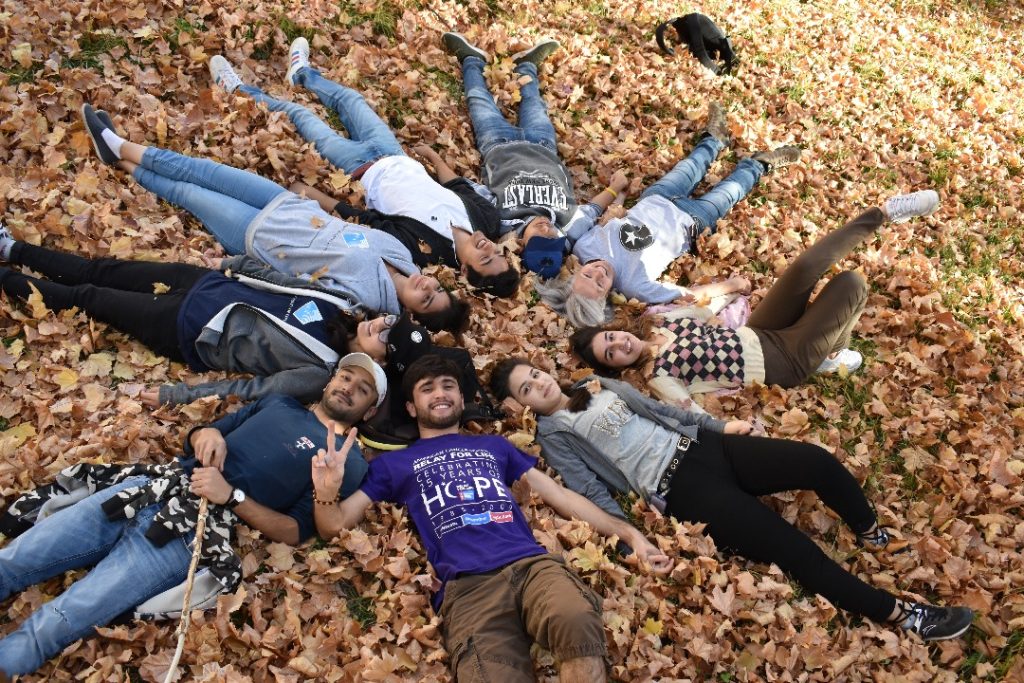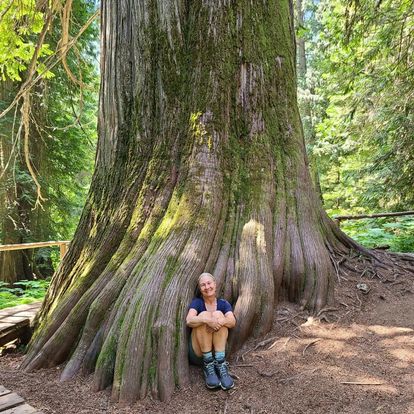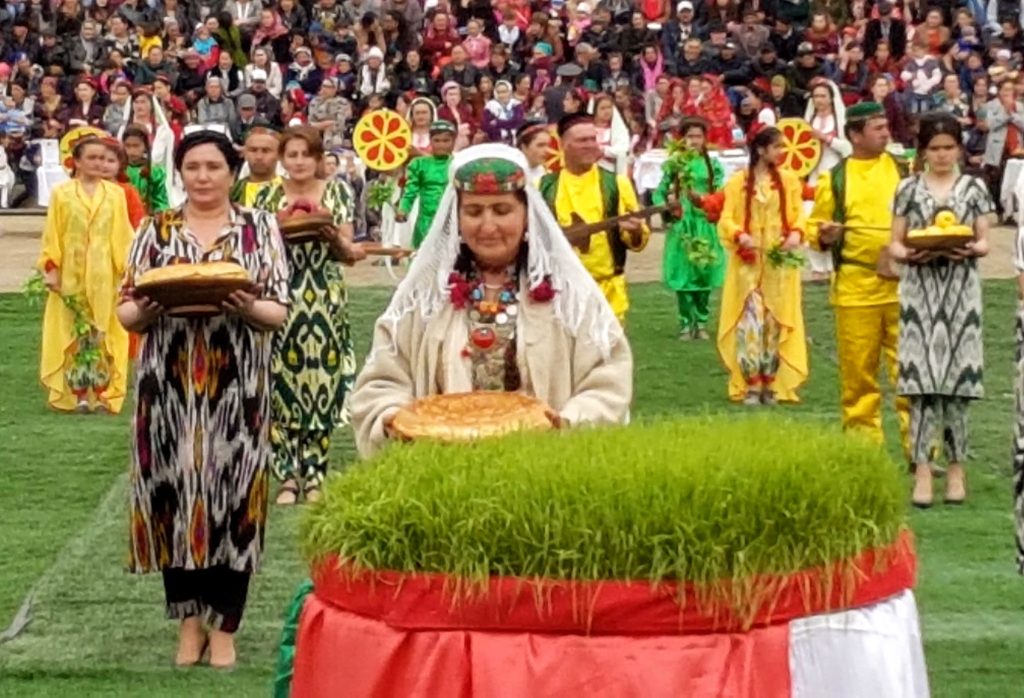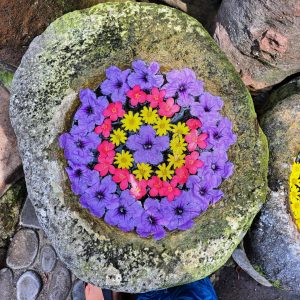38 Eco-Psychology: We Are Earth

Deep ecology involves experiencing ourselves as part of the living planet.
Did you know that Scottish doctors can now prescribe walks in nature or community gardening as part of their treatment plan for various kinds of mental and physical health issues? We are increasingly understanding, or maybe re-learning, that our overall wellbeing is inextricably connected to the plants, animals and elements we share this world with.
Eco-psychology applies ecological and psychological theories and research methodology to study the relationship between people and the natural world. – What is Ecopsychology
Despite the modern era where we have sought “dominion” over the earth, many humans throughout history, have seen the world as a living organism. This chapter challenges us to take learning out into the forests and fields where we might glimpse our place in the wider community of all life:
“You are comprised of 84 minerals, 23 elements and 8 gallons of water spread across 38 trillion cells.
You have been built up from nothing by the spare parts of the Earth you have consumed, according to a set of instructions hidden in a double helix and small enough to be carried by a sperm.
You are recycled butterflies, plants, rocks, streams, firewood, wolf fur and shark teeth broken down to their smallest parts and rebuilt in our planet’s most complex living thing.
You are not living on earth. You are earth.”
Purpose
The purpose of these eco-psychology activities is to deepen a sense of connection to the living earth.
Learning Objectives
Participants will:
- Experience time in nature and reflect on how this impacts their mental, physical and spiritual health.
“If we see ourselves as a part of the tree of life and the interconnected web of living beings we call Gaia, then a Deep Ecological approach to spirituality might emphasize our relationship with this larger whole. We may look at life itself as being sacred and see possibilities for the larger force of life acting through us for earth recovery. Thus this lifesaving spirituality can be an important source of inspiration to face and respond to environmental/societal problems of our world.” – deepecology/dharmanet
A Buffet of Earth Connecting Experiences
These are not activity directions, but rather a variety of possibilities that can be used for experiential connections with the natural world. I think the first step to integrating eco-psychology into social/emotional learning is truly valuing that the world is our community and that we need opportunities to feel our bare feet on the ground. This is not to say that encounters with nature are always comfortable and pretty. There is the reality of ants and thistles and storms and “nature red in tooth and claw.” But perhaps comfort has been over rated, and making space in curriculum and learning experiences for contacting the beauty and the prickles is also metaphoric for being willing to step outside our comfort zones and allow ourselves to experience and process the challenging emotions and experiences in our life as well.
This is just a starting list of ideas for helping your participants to explore their relationship with the natural world:
- Begin workshops or classes with a short walk outside. You can either walk in a line as in Buddhist Walking Meditation, or people can wander aimlessly with the suggestion to stay silent and open their senses to the sounds, textures, smells and colours that they are experiencing.
- Ask people to share a special place in nature they remember from their childhood. What was it about that place that touched them? How did they feel when they were there?
- Ask participants to find a small piece of earth somewhere in a garden, park or wild area. Spend an hour in that place getting to know that small eco-system. What lives and grows there? When they come back to the group, they can introduce their special piece of earth with sketches, photos, audio recordings, poetry or video.
- If weather and conditions permit, bring blankets or yoga mats and have people lie on the earth. Ask them to imagine that the earth is breathing them – that earth is alive and we are a small piece of that aliveness. What would be different in our world if we could inhabit that knowing?
- Read the following quote and discuss: “Colonialism didn’t just steal land – it rewrote the story of nature. It taught us to see the Earth as something to dominate, not something to belong to.” earthlyeducation
- What are your thoughts on this perspective?
- What did your education and culture teach you about your relationship with the earth?
- How do you think your ancestors might have related to the earth?
- What are steps we could take to change the paradigm from dominating the earth to feeling a sense of belonging to the earth?
- If you are indigenous or live near indigenous people, explore if there are cultural rituals or indigeneous ways of knowing the world that can be integrated into your learning experiences.
Example: Sweat Lodge at Alkali Lake
When I lived in a rural ranching community with Canada World Youth, the local Esketemc elders invited us to join them in a sweat lodge. We sat together in the steam, heat and cedar boughs with people from Indonesia, European colonial backgrounds and the indigeneous people who had lived on that land since time immemorial.
They told us that entering the lodge through the round entrance was like entering the womb of the earth and this was an opportunity to cleanse and release tensions and blocks within us. Elders honoured the directions and facilitated rounds of sharing sorrows and gratitude.
Even though this sweat lodge experience was 38 years ago, I still remember us all repeating the phrase “all my relations” and recognizing that this sense of family extended to the water and trees and stars and creatures.
Eco-psychology is a new term for ancient wisdom.
- Read about Shinrin-yoku, the Japanese practice of “forest bathing.” Take your group to a forest and immerse yourself in the healing presence of the scent, movement and ancient beauty of trees. Have participants find a tree and spend 15 minutes sitting with their back against it. Ask them to write as if they are the tree. What has it seen and experienced? How does it see you? How does it see itself in the forest? What advice does your tree give

- Read or watch together a book, article or movie that explores either with science or imagination, the fascinating communication systems and sentient qualities of trees and plants:
- The Overstory – Richard Powers
- Finding the Mother Tree by Suzanne Simard
- The Secret Life of Trees: The Astonishing Science of What Trees Feel and How They Communicate
- Braiding Sweet Grass, Robin Wall Kimmerer
- Avatar or Fern Gully movies
- Watch the following video for a humorous spoof on pharmaceutical ads. It prescribes nature for many different ailments. (Note: View the video ahead of time to gauge whether is it appropriate for your group, as their is a moment of bare bum nudity a the very end.) Nature as Medicine
- Create rituals for the rhythms of the earth. Persian cultures welcome spring with Nawruz. What other ways can we celebrate the seasons that flow through us?

- Create earth art that honors the beauty and impermanence of all life. Look at the art of Andy Goldsworthy for inspiration and then go into a landscape in small groups and create eco-art! Land Art by Andy Goldsworthy

“We often forget WE ARE NATURE: Nature is not something separate from us. So when we say that we have lost our connection to nature, we’ve lost our connection to ourselves.” –Andy Goldsworthy
- Have people find a place in nature where they can sit, but also hear the facilitator’s voice. Read the following contemplation and then give participants time to wander and allow their senses to engage with their environment. You could end with some reflective journaling about their experience with being aware of their senses as portals to the natural world. Check with them whether time in nature calmed their nervous system.
Engaging your senses while embedded in nature:
Close your eyes, close your nose with one hand and gently breathe through the mouth and listen. Try to put the whole consciousness into the sense of hearing. What are the sounds you encounter? Sounds near you or in the distance, sounds from the wind and animals such as birds and insects.
Close your ears with your hands and open your eyes, note everything that your eyes encounter, the colors, shapes and forms, the light, the dark, the shadows and movements.
Close your eyes again and see what your nose will experience. Take a few deep breaths and smell . . . Then breathe through your mouth and try to distinguish between different tastes of the air, the air that enters your body and the air that leaves your body when breathing out.
Walk around and touch the trees, leaves, berries, flowers, grass or water; whatever is there, touch it gently and examine the different surfaces of form.
Let your mind wander for a while. What does the surrounding environment remind you of? Recall pictures from the past and see how they affect your present mind. Spend a few moments before you open your eyes, feeling the full environment through all of your senses.
Key Takeaways of health benefits from spending time in nature:
Nature can positively impact the nervous system in several ways, including:
- Activating the parasympathetic nervous system: Nature triggers the body’s “rest and digest” response, which can help restore the body from the “fight or flight” response. This can help reduce stress, lower cortisol levels, and improve mental health.
- Reducing stress hormones: Exposure to nature can reduce the production of stress hormones.
- Improving mood: Nature can increase feelings of pleasure and empathy, and reduce anger and fear.
- Improving physical well-being: Nature can reduce blood pressure, heart rate, and muscle tension.
- Improving cognitive health: Nature can improve memory and brain function.
Some ways to experience the benefits of nature:
- Taking a walk outdoors for 10 to 20 minutes
- Spending 30 minutes outside
- Noticing the sights, smells, and sounds of nature
- Practicing mindfulness
- Making art with natural materials
- Practicing biophilia, which is enjoying nature even if you don’t live near it through nature documentaries, books or photographs.
